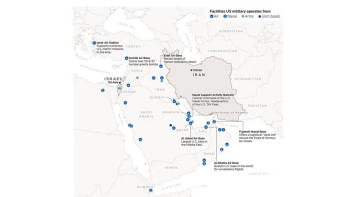Global efforts to fight wheat blast
Global scientific resources have been pooled under an international collaboration to combat wheat blast in Bangladesh so that the fearsome fungal disease is not spread across South Asia.
Under the initiative, sources of resistance to wheat blast would be identified and the same would be deployed in wheat varieties adapted to Bangladesh. South American nation Bolivia, long ravaged by wheat blast, will assist with large-scale field experiments to select suitable wheat lines.
Naresh Chandra Dev Barma, head of Bangladesh Wheat Research Centre (WRC), told The Daily Star that under an initiative led by International Maize and Wheat Improvement Center (CIMMYT), researchers from nearly a dozen institutions worldwide will join forces to develop high-yielding varieties with resistance to blast, reducing the risk of catastrophic crop losses in four-year time.
Following the fungal attacks in Bangladeshi wheat fields in two successive years, the Mexico-based CIMMYT expressed fear that the wheat blast pathogen was likely to spread soon throughout South Asia.
It is a region where rice-wheat cropping rotations cover 13 million hectares and nearly a billion inhabitants consume over 100 million tonnes of wheat each year.
Bolivia's National Institute of Agricultural and Forestry Innovation (INIAF), the US Department of Agriculture (USDA), Kansas State University, USA, and national and provincial research organisations from India, Nepal, and Pakistan joined hands with Bangladesh's Wheat Research Centre to fight the blast.
This urgent global response to wheat blast has received a $1.5 million from the Australian Centre for International Agricultural Research (ACIAR) to breed blast resistant wheat varieties in four years.
In the aftermath of the blast attack in Bangladesh's wheat fields, CIMMYT Director General Martin Kropff visited the country to have a first-hand understanding of the first Asian outbreak of wheat blast.
Caused by the fungus Magnaporthe oryzae pathotype Triticum (MoT), wheat blast remains a little understood fungal disease.
After emerging first in Brazil back in 1985, wheat blast suddenly appeared in Bangladesh last year and blighted wheat crops. It struck again this year, though on a limited scale but spread to new areas.
The disease had been confined within the South American continent until last year when it first struck Asia by destroying wheat on 15,000 hectares of land in Bangladesh. Farmers in parts of West Bengal also reported a very limited blast infestation this year, but India refrained from officially declaring it as “wheat blast”.
Leading plant pathologist Prof M Bahadur Meah of Bangladesh Agricultural University, Mymensingh, told The Daily Star that some 8,000 wheat germplasms would be explored to find out resistance to blast.
“This research project aims to identify sources of resistance, characterise the resistance genes, and develop DNA markers to create resistant, locally-adapted wheat varieties and make them available to farmers,” said Pawan Singh, head of wheat pathology at CIMMYT, an organisation whose breeding lines are used by public research programmes and seed companies in over 100 countries.
“Chemical controls are costly and potentially harmful to human and environmental health. So fortifying crops like wheat with inherent resistance is the smart alternative, but resistance must be genetically complex, combining several genes, to withstand new mutations of the pathogen over time,” he added.
Hans-Joachim Braun, director of the global wheat program at CIMMYT, said: “The Bangladesh strain of blast is much more aggressive than the strains collected in the early days of observation in South America, when the disease was considered an oddity unable to cause large epidemics”
Fungicides offer only partial control of blast, according to WRC Director Naresh Chandra. “Under the right conditions, the fungus can develop with lightning speed, blanching and withering the grain. By that time the farmers' losses are near total.”
“Given the manifest instability of global food markets and increasing disease and climate change threats to farm productivity in South Asia, it makes perfect sense to help countries protect their capacity to meet much of their own domestic demand for this major food grain,” said Eric Huttner, research program manager at ACIAR.
Wheat is Bangladesh's second most important staple food after rice. With an annual production of around 1.35 million tonnes and consumption of over 5.5 million tonnes, the country currently spend nearly $1 billion on wheat imports annually.

 For all latest news, follow The Daily Star's Google News channel.
For all latest news, follow The Daily Star's Google News channel. 



Comments